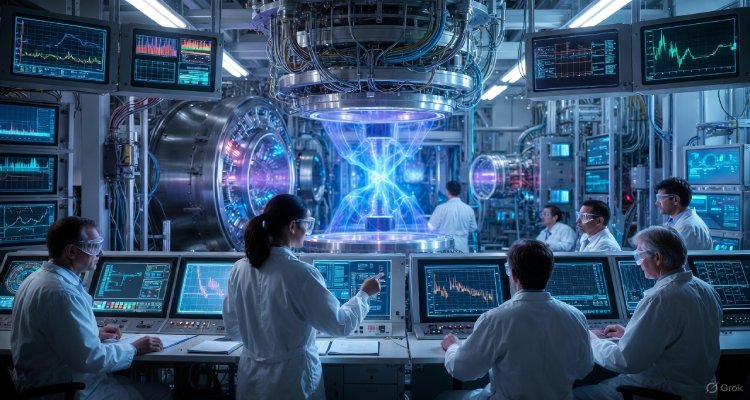The Elemental Code: Unlocking the Periodic Puzzle
Discover how modern science is decoding the periodic table’s hidden patterns, revealing new elements and reshaping everything from medicine to AI.
Introduction: Cracking Nature’s Blueprint
In a quiet lab tucked behind reinforced doors and hums of ion accelerators, scientists are unlocking secrets buried in the very building blocks of matter. The periodic table—often seen as a static chart in classroom posters—is undergoing a transformation. Far from being a relic, it’s becoming a dynamic code that’s shaping the next era of discovery. From synthetic elements and quantum models to AI-assisted chemistry, the elemental code is no longer just about understanding the past—it’s about engineering the future.
Context & Background: From Mendeleev’s Vision to Modern Mystery
When Russian chemist Dmitri Mendeleev introduced the periodic table in 1869, he couldn’t have predicted how profoundly it would structure the science of the future. By arranging elements by atomic weight and properties, he created not just a classification system—but a predictive tool. Over the next century, the table expanded as new elements were discovered, synthetic atoms were created in labs, and quantum mechanics provided a more profound explanation of atomic behavior.
Today, the periodic table holds 118 confirmed elements, yet the frontier hasn’t closed. Scientists are working to discover elements 119 and beyond, pushing the boundaries of chemistry and physics, and possibly rewriting what we know about the universe.
Main Developments: A Living, Expanding Table
Superheavy Elements and Synthetic Discoveries
In recent years, researchers at laboratories like Dubna (Russia), RIKEN (Japan), and Lawrence Livermore (USA) have synthesized elements like Moscovium (115), Tennessine (117), and Oganesson (118). These superheavy elements don’t exist naturally and decay in fractions of a second, but their creation helps physicists explore nuclear stability and atomic theory.
What’s fascinating is the search for the theorized “island of stability”—a zone where certain superheavy elements could be surprisingly long-lived. If found, they could open new paths in nuclear energy, deep space propulsion, and even quantum computing.
AI-Powered Chemistry
Artificial intelligence is being used to predict unknown compounds and element behaviors. At MIT and DeepMind, neural networks are analyzing chemical interactions faster than any chemist could. These smart systems can hypothesize new molecules, identify periodic trends beyond human perception, and even simulate reaction outcomes—revolutionizing how drugs, semiconductors, and materials are designed.
Periodic Table Goes 3D
Researchers are reimagining the 2D periodic table into interactive 3D and quantum models. These versions factor in orbital hybridization, electron cloud geometry, and machine-learning insights. It’s not just about neat columns anymore—it’s about understanding how atomic architecture interacts with forces like gravity, electromagnetism, and entropy.
Expert Insight: Rewriting the Rules of Chemistry
Dr. Clara Mendoza, a theoretical chemist at Caltech, believes the periodic table is at a “crossroads of tradition and revolution.”
“We’re no longer just teaching the periodic table; we’re hacking it,” she explains. “It’s becoming a tool not just to understand the world, but to design new ones—from biocompatible metals to quantum conductors.”
Meanwhile, physicist Dr. Raj Patel, who works on particle collisions at CERN, emphasizes its broader significance:
“Each new element discovered isn’t just a trophy—it’s a validation of quantum models and nuclear theories. It’s physics in action.”
Impact & Implications: Redefining What’s Possible
Medicine & Health
Newly engineered elements are being used in targeted cancer therapies, such as alpha-emitting isotopes that destroy tumor cells with pinpoint accuracy. Medical imaging is also benefitting from rare-earth elements with enhanced magnetic properties for cleaner MRI scans.
Clean Energy & Industry
Advancements in lanthanides and actinides—groups critical for batteries, wind turbines, and nuclear reactors—are enabling greener technologies. Elements like lithium and cobalt are foundational for electric vehicles, while research into safer thorium reactors could revolutionize nuclear power.
Space & Defense
Superconducting elements are reshaping aerospace and military applications, with lighter, more heat-resistant materials being tested for hypersonic aircraft and satellite shielding.
But with these discoveries come questions—about safety, ethics, environmental impact, and who gets access to rare or newly synthesized materials. The elemental code, in this sense, is also a geopolitical game.
Conclusion: The Table Is Just the Beginning
The periodic table may appear static, but beneath its rows and columns lies a vibrant, evolving matrix of scientific potential. With AI accelerating discovery and quantum models reshaping how we understand matter, the elemental code is not just about atoms—it’s about ambition.
As we move deeper into the 21st century, unlocking the periodic puzzle isn’t just an academic pursuit. It’s a frontier that will determine how we power our world, cure our diseases, and even reach for the stars.
Disclaimer : This article is for informational purposes only and does not constitute scientific advice. Always consult authoritative sources or professionals for technical guidance.











